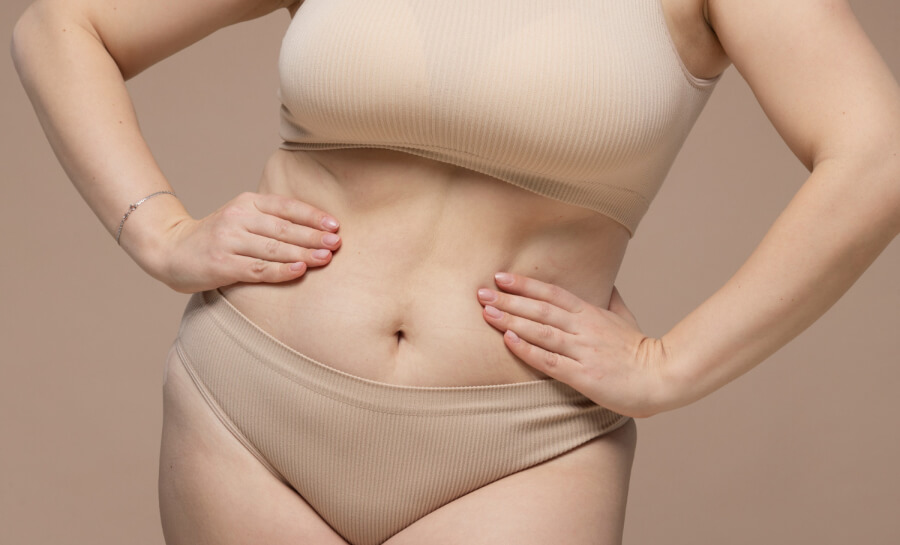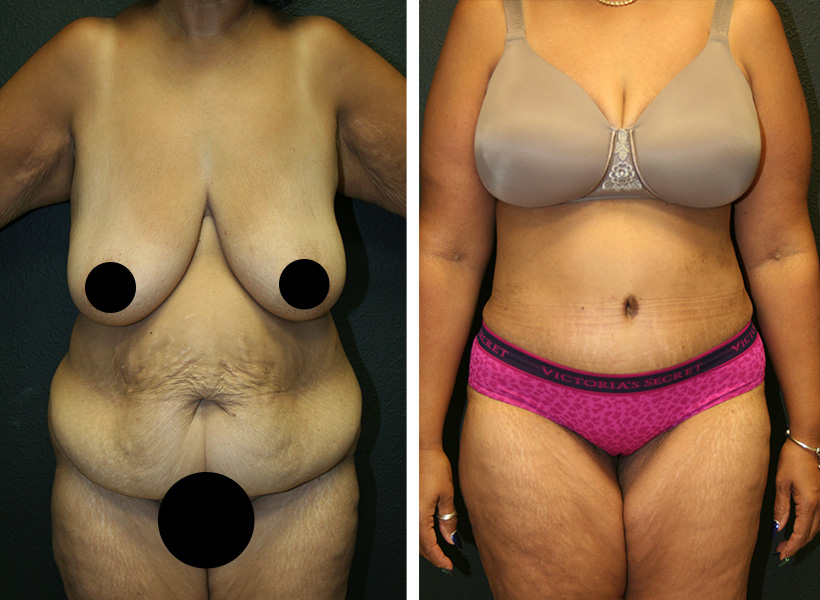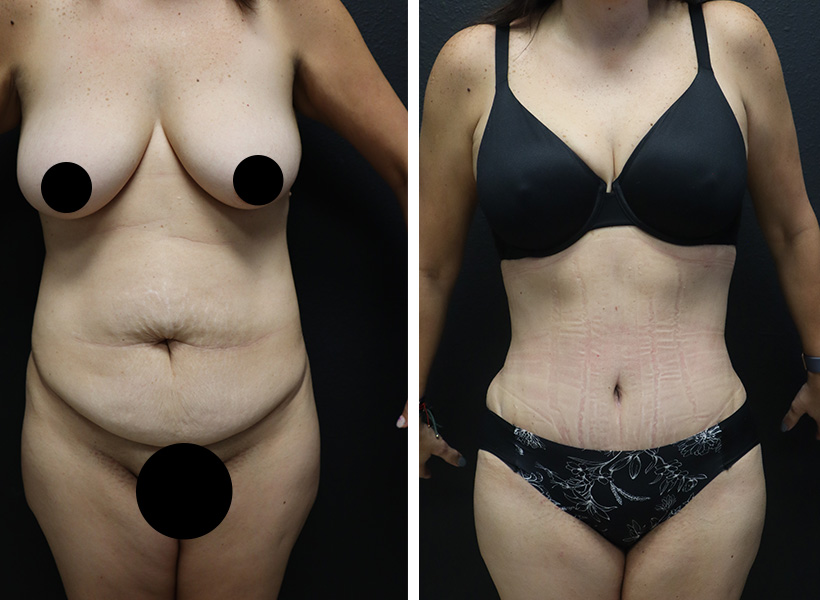Which Type of Tummy Tuck Fits Your Goals?
Below are the abdominoplasty variations that Sarasota Surgical Arts actively offers. Each tightens abdominal muscles, addresses diastasis recti, and refines overall body contouring, but the incision pattern and skin-removal zones differ.
Full / Standard Tummy Tuck
A full or standard abdominoplasty is performed when moderate-to-severe laxity exists both above and below the navel and the rectus muscles are widely separated. Dr. Sessa makes a low, hip-to-hip incision, lifts the abdominal flap, and carries out multilayer plication to restore a firm, corset-like midsection. He then trims excess skin, repositions the navel, and can add 360° liposuction for a seamless waistline transition.
Mini Tummy Tuck
A mini abdominoplasty targets mild laxity confined to the lower abdomen, where muscle separation is minimal and the belly button can remain undisturbed. Through a short bikini-line incision, Dr. Sessa tightens the lower rectus muscles and removes a narrow strip of loose skin, leaving a shorter scar and faster recovery than a full tuck. Patients enjoy a flatter lower belly and clothes that fit more smoothly.
Extended Tummy Tuck
If you've lost a significant amount of weight and are left with loose skin around your waist or flanks, an extended tummy tuck in Sarasota may be the answer . Dr. Sessa lengthens the incision past the hips, excises lateral rolls, and contours the upper buttock-hip junction to blend the torso and flanks. The result is a smoother silhouette from every angle and fewer “dog-ear” bulges at the incision ends.
Fleur-de-Lis Tummy Tuck
A fleur-de-lis abdominoplasty suits massive-weight-loss patients with horizontal and vertical excess that no standard incision can address. Dr. Sessa removes a vertical wedge of skin in addition to the horizontal strip, then tightens in two directions to flatten the abdomen and narrow the waist dramatically. Although a midline scar is added, the trade-off is unparalleled circumference reduction and midline definition.
Reverse Tummy Tuck
A reverse abdominoplasty corrects laxity confined to the upper abdomen while the lower belly already lies flat. Dr. Sessa hides the incision in the inframammary fold and lifts redundant upper-abdominal skin toward the breast crease, avoiding any lower-abdominal revision. This option is often paired with breast surgery, delivering one-stage rejuvenation of both the upper abdomen and chest.
Unsure which option is best? During your consultation, Dr. Sessa will map your midsection in 3-D, show simulation images, and recommend the least invasive approach to achieving your goals.












